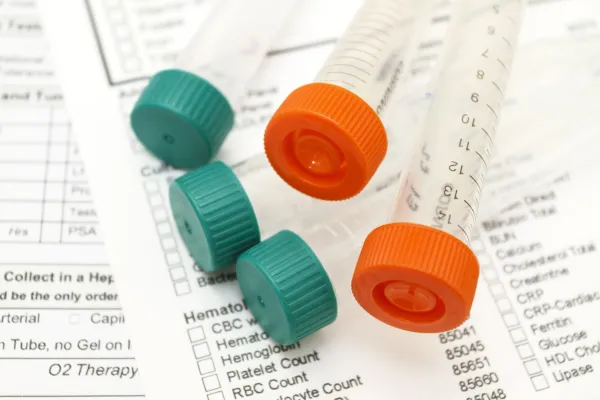Prepare for Lab-Relevant 2020 Diagnosis Codes

Start using new and revised codes Oct. 1, 2019. With 273 additions, 21 deletions, and 30 revisions to ICD-10-CM 2020, you can’t afford to ignore changes that could impact your lab. Remember: Pathologists often assign diagnosis codes based on findings from procedures such as tissue exams, and clinical labs must use current ICD-10-CM codes assigned by the ordering physician to demonstrate medical necessity for ordered tests. Don’t miss: Medicare quality reporting programs rely on appropriate diagnosis coding to evaluate appropriate procedures — so missing the boat now could impact your bottom line later. Update Congenital Abnormality Coding You’ll find a vast number of Chapter 17 (Congenital malformations, deformations and chromosomal abnormalities (Q00-Q99)) changes that practices should review, according to Donelle Holle, RN, a healthcare, coding, and reimbursement consultant in Fort Wayne, Indiana. For instance: ICD-10 2020 has pluralized the code for Ehlers-Danlos syndrome, Q79.6- (Ehlers-Danlos syndromes) to reflect variants of this connective-tissue disorder with the following new codes: Additionally, “ICD-10 has removed Prader-Willi syndrome from the synonyms for Q87.1 (Congenital malformation syndromes predominantly associated with short stature) and given it its own code, Q87.11, while all other synonyms are now defined as ‘Other’ under Q87.19” notes Jan Blanchard, CPC, CPMA, a consultant at Vermont-based PCC. Purpose: Labs might perform associated test 81331 (SNRPN/UBE3A (small nuclear ribonucleoprotein polypeptide N and ubiquitin protein ligase E3A) (eg, Prader-Willi syndrome and/or Angelman syndrome), methylation analysis) for Prader-Willi diagnosis. ICD-10-CM 2020 also expands Q66.- (Congenital deformities of feet) “for reporting of laterality,” explains Heidi Stout, BA, CPC, COSC, PCS, CCS-P, with Coder on Call, Inc., in Milltown, New Jersey. Learn Blood and Immune-Mechanism Code Changes Labs may perform genetic testing for Glucose-6-phosphate dehydrogenase (G6PD) deficiency using a code from the range 81247-81249 (G6PD (glucose-6-phosphate dehydrogenase) (eg, hemolytic anemia, jaundice), gene analysis;…). You’ve had D55.0 (Anemia due to glucose-6-phosphate dehydrogenase [G6PD] deficiency) to report anemia associated with the G6PD deficiency, but ICD-10-CM 2020 will allow you to report the deficiency when anemia is absent. You’ll find this new note under D55: Excludes1: glucose-6-phosphate dehydrogenase (G6PD) deficiency without anemia (D75.A), and new code D75.A (Glucose-6-phosphate dehydrogenase (G6PD) deficiency without anemia) to report the condition. ADA deficiency: ICD-10-CM 2020 adds specificity to coding for adenosine deaminase (ADA) deficiency, a genetic disorder that affects lymphocyte development and can result in severe combined immunodeficiency disorder (SCID). Starting Oct. 1, instead of reporting D81.3 you should choose the most specific one of the following new codes: Refresh Breast-Lump Coding When your pathologist examines breast tissue, correct diagnosis coding has demanded specific anatomic-site specificity based on laterality and breast quadrant since ICD-10-CM added N63.- details two years ago. For 2020, you have the following two new, specific codes for cases involving a breast lump that doesn’t conform to existing codes because it overlaps quadrants: Renovate Urinalysis Coding If your lab performs urinalysis, you should be familiar with some ICD-10-CM 2020 changes that could affect your test orders and reports. For instance: Current diagnosis R82.8 (Abnormal findings on cytological and histological examination of urine) is deleted from the 2020 code set. Two related diagnoses are added in its place to add specificity: R82.81 (Pyuria) and R82.89 (Other abnormal findings on cytological and histological examination of urine). “With these changes (and any diagnosis selection), be sure to pay attention to the details,” says Kelly Dennis, MBA, ACS-AN, CAN-PC, CHCA, CPC, CPC-I, owner of Perfect Office Solutions in Leesburg, Fl. “When I’m auditing codes, many of the mistakes I see are based on the coder not paying attention to the slight differences between code descriptors.” Case in point: The descriptor for diagnosis R82.993 is changing by a single letter. The current descriptor is “Hyperuricoscuria.” The new descriptor will be “Hyperuricosuria.” By either term, the condition is defined as the presence of excessive amounts of uric acid in the urine. For men, greater than 800 mg/day is considered excessive; for women, the amount is greater than 750 mg/day. This change corrects a spelling error that had been inadvertently published in the 2019 ICD-10-CM manual. Expand Poisoning Code Choices When clinicians order drug tests from your lab, you’ll need to recognize a host of potential new ordering diagnosis codes. That’s because ICD-10-CM 2020 delivers 18 new codes in the T50.91 section (Poisoning by, adverse effect of and underdosing of multiple unspecified drugs, medicaments and biological substances). The new section will allow you to specify the manner in which a patient was poisoned by multiple drugs, whereas in the past, there wasn’t a section that specifically noted that patients were poisoned due to a variety of drugs. For instance, you’ll find such codes as T50.912A (Poisoning by multiple unspecified drugs, medicaments and biological substances, intentional self-harm, initial encounter) and T50.911 (… accidental (unintentional)). You’ll also find new codes for adverse effects of multiple drugs (T50.915-) and underdosing of multiple unspecified drugs (T50.916-). Upgrade Personal History Choices Starting Oct. 1, clinicians have a host of new personal-history codes that might serve as an ordering diagnosis for lab tests or pathology examination. You should be familiar with the following new codes that might end up on your test requisitions: Get the Last Word “I encourage coders to get in there and review these changes personally. No one knows your practice like you do, so you should look through the addenda for those special items you alone will notice,” advises Blanchard. To view the entire 2010 ICD-10-CM Addenda, go to www.cms.gov/Medicare/Coding/ICD10/2020-ICD-10-CM.html and download the zip file labeled 2020 Addenda.




